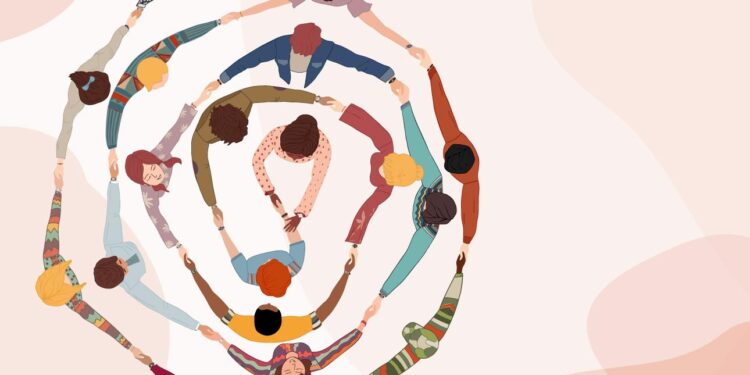Feeling out of place can be a deeply unsettling experience, affecting everything from our mental health to our sense of identity. Yet, belonging is a fundamental human need, rooted in our psychology and biology. In a new article from New Scientist, experts explore the science behind why we sometimes feel we don’t quite fit in-and offer evidence-based strategies to help us reconnect and find our place. Drawing on the latest research in social neuroscience and psychology, the piece sheds light on how we can overcome feelings of exclusion and build meaningful connections in an increasingly fragmented world.
Why Feeling Out of Place Is More Common Than You Think
Feeling out of place isn’t merely a fleeting emotion-it’s a universal experience wired into the human psyche. Psychological research reveals that social belonging is a fundamental human need, yet our modern environments constantly challenge this instinct. Factors such as rapid societal changes, cultural diversity, and digital interactions contribute to moments when many find themselves disconnected. This sense of alienation can stem from subtle social cues or profound life transitions, making it a shared experience rather than an individual failing.
Studies highlight key reasons why this feeling is so widespread:
- Human brains are hardwired to seek group acceptance as a survival mechanism.
- Social comparisons often lead to feelings of inadequacy, intensifying the perception of not fitting in.
- Modern communication platforms sometimes amplify isolation despite connecting people globally.
| Factor | Impact on Belonging |
|---|---|
| Rapid Life Changes | Disrupt routines and existing social bonds |
| Digital Communication | Creates illusion of connection but may increase isolation |
| Social Comparison | Triggers feelings of inadequacy and exclusion |
The Neuroscience Behind Belonging and Social Connection
Human brains are hardwired to seek connection, driven by neural circuits that reward social interaction with a powerful release of neurotransmitters like dopamine and oxytocin. These chemicals don’t just make us feel good; they reinforce behaviors that foster group cohesion. When social bonds are lacking, these pathways can trigger feelings akin to physical pain, illuminating why exclusion often hurts so deeply. Interestingly, regions such as the anterior cingulate cortex activate both during experiences of social rejection and physical injury, highlighting the biological inevitability of our need to belong.
Key findings from recent neuroscience research include:
- Oxytocin: Often dubbed the “love hormone,” it enhances trust and empathy, encouraging prosocial behavior and bonding.
- Reward system: Social interactions stimulate the brain’s reward circuits, particularly the ventral striatum, which reinforces positive social experiences.
- Stress response: Lack of connection triggers the release of cortisol, increasing anxiety and impacting long-term health.
| Brain Region | Function | Role in Belonging |
|---|---|---|
| Anterior Cingulate Cortex | Pain Processing | Activated during social rejection |
| Ventral Striatum | Reward & Motivation | Reinforces social bonding |
| Hypothalamus | Hormonal Control | Oxytocin release |
Practical Strategies Backed by Science to Cultivate a Sense of Community
Building a sense of belonging isn’t just about spending time with others; it’s about creating meaningful connections that satisfy deep psychological needs. Research highlights the power of active listening and shared vulnerability as cornerstones in fostering true community bonds. When individuals feel heard and understood without judgment, it triggers the release of oxytocin, often dubbed the “bonding hormone,” enhancing trust and emotional closeness. Regularly engaging in group activities that promote collaboration rather than competition-such as community projects, team sports, or creative workshops-also strengthens ties by aligning goals and values.
Scientifically proven methods emphasize consistency and intentionality. Establishing rituals or routines within groups can make members feel more secure and valued. For instance, simple practices like weekly check-ins or gratitude-sharing circles help reinforce group identity and emotional safety. Below is a quick overview of practical strategies validated by research to nurture community spirit:
| Strategy | Scientific Benefit | Example |
|---|---|---|
| Active Listening | Enhances trust and empathy | Community listening sessions |
| Shared Vulnerability | Promotes emotional bonding | Storytelling circles |
| Group Rituals | Creates predictability and safety | Weekly gratitude-sharing |
| Collaborative Goals | Boosts collective identity | Neighborhood clean-ups |
To Conclude
Feeling out of place can be a deeply unsettling experience, but as the latest research highlights, it is far from uncommon-and there are evidence-based strategies to help. From cultivating social connections to reframing negative self-perceptions, science offers practical tools to foster a greater sense of belonging. While no single solution fits all, understanding the psychological and neurological underpinnings of belonging can empower individuals to navigate feelings of isolation with greater resilience. As New Scientist has shown, bridging the gap between knowledge and lived experience is key to overcoming that pervasive sense of not quite fitting in.































